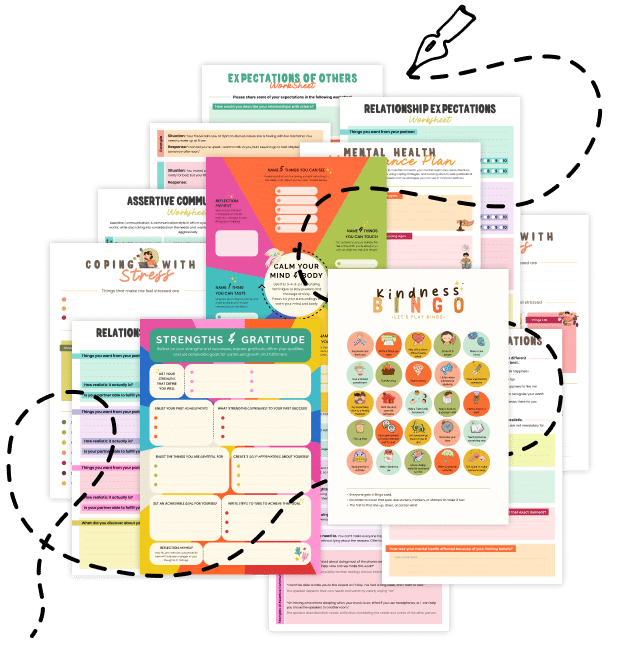20 Things You Should Know About the Spacing Effect
Unlock the power of the Spacing Effect to boost your memory and learning. Discover 20 key insights on how spreading out study sessions over time leads to deeper, longer-lasting retention.
1. What Is the Spacing Effect?
The Spacing Effect is a phenomenon where information is more easily recalled if study sessions are spaced out over time rather than crammed in one session. It’s a powerful learning principle that leverages time to enhance memory retention.
2. A Proven Learning Strategy
Research dating back to the 19th century shows that spreading out your study sessions leads to significantly better long-term retention compared to massed practice, commonly known as “cramming.”
3. How It Works
Spacing out learning sessions forces your brain to work harder to retrieve information, reinforcing neural connections each time you recall the material. This repeated retrieval strengthens the memory trace.
4. Combatting the Forgetting Curve
The Spacing Effect helps counteract the natural forgetting curve—the tendency to lose information over time if it isn’t revisited. Regular, spaced reviews keep memories accessible and durable.
5. Time Intervals Matter
The optimal spacing interval can vary based on the material and your goals. Generally, review sessions should be planned over increasing intervals—such as one day, then a few days, and later a week or more.
6. Active Recall Is a Key Component
Pairing the Spacing Effect with active recall—testing yourself on the material—amplifies learning. When you actively retrieve information over spaced intervals, your retention skyrockets.
7. Enhances Deep Learning
Spacing your study sessions encourages deeper processing of the material. It pushes you to re-engage with the content each time, promoting a more comprehensive understanding rather than superficial memorization.
8. Applicable to Various Subjects
The Spacing Effect is versatile. Whether you’re studying languages, science concepts, history facts, or even practical skills, spacing your practice leads to improved long-term retention across the board.
9. Ideal for Exams and Certifications
Students and professionals preparing for exams can benefit enormously from spaced repetition. Using flashcards or spaced repetition software (like Anki or Quizlet) can turn challenging subjects into manageable tasks.
10. Less Stress, More Confidence
When you study over time instead of cramming, you reduce stress and build confidence. Knowing you’ve revisited the material multiple times eases exam anxiety and promotes mastery.
11. Supports Habit Formation
The principle behind the Spacing Effect also applies to building habits. Regular, spaced practice of a new skill (like playing an instrument or exercising) helps solidify it into your routine.
12. Combines Well with Other Techniques
Integrating the Spacing Effect with methods like interleaving (mixing different topics) or self-testing can further optimize learning. Each technique complements the others to form a robust study strategy.
13. Technology Can Help
Digital tools and apps designed for spaced repetition automate the process, ensuring you review material at optimal intervals without the hassle of manually scheduling sessions.
14. Customizable for Individual Needs
Everyone’s learning curve is different. Experiment with various spacing intervals to determine what works best for you, whether it’s a daily review or longer breaks between sessions.
15. Prevents Overload
Spacing out study sessions reduces cognitive overload. By giving your brain time to consolidate information, you prevent burnout and allow for better mental organization.
16. Encourages Consistency
A spaced learning schedule fosters consistency. Instead of intense, sporadic study bursts, you create a steady habit that keeps information fresh and continuously reinforced.
17. Enhances Critical Thinking
When you revisit material over time, you’re more likely to connect new insights with previously learned concepts. This promotes critical thinking and a more integrated understanding of the subject matter.
18. Evidence-Based Success
Numerous studies have demonstrated the effectiveness of the Spacing Effect in various educational contexts, making it one of the most reliable strategies for long-term learning and memory enhancement.
19. Beyond Academics
The benefits of spacing aren’t limited to formal education. They can also apply to professional development, language learning, and even everyday skills like cooking or sports.
20. Related Topics to Explore
- Active Recall vs. Passive Review: Understand how testing yourself is more effective than simply rereading material.
- Memory Reconsolidation: Learn how revisiting memories can alter and strengthen them.
- Cognitive Load Theory: Discover how balancing mental effort can optimize learning.
- Spaced Repetition Software: Explore digital tools that automate the spacing process for enhanced retention.
Quick Tips for Implementing the Spacing Effect
- Plan Your Study Schedule: Break your study sessions into short, spaced intervals rather than one long cramming session.
- Use Digital Tools: Try apps like Anki or Quizlet to automate spaced repetition.
- Combine with Active Recall: Test yourself regularly during each spaced session to reinforce memory.
- Mix Subjects: Interleave different topics to boost overall retention and critical thinking.
- Review Consistently: Set reminders for follow-up reviews over increasing intervals to keep the material fresh.
The Spacing Effect is a proven strategy to transform how you learn and retain information. By spacing out your study sessions and combining them with active recall, you not only enhance memory retention but also reduce stress and build deeper understanding. Whether you’re a student, professional, or lifelong learner, incorporating the Spacing Effect into your study habits can lead to remarkable improvements in performance and long-term success.
Share this article with anyone eager to unlock the full potential of their learning process. Embrace the power of spaced repetition and watch your knowledge flourish over time!

